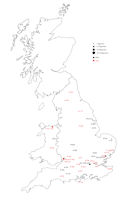
Figure 29: Distribution of boar and dog figurines
Among the birds and animals, other than those already mentioned in connection with other deities, only the boar and dog occur in any number (Figure 29). Boar figurines are sparsely scattered, except for an interesting group of six figures along the southern coast of Sussex. These are all rather stylised pieces, usually with a dorsal crest. Unfortunately only 6 of the 25 boar figurines come from a known context, thus little can be said of their social distribution.
The dogs, like so many other figurines, are concentrated in the south, with a few scattered pieces further north. Dogs are found on the complete range of site types, but there does seem to be a slight concentration at rural and religious sites, including the group from the temple at Lydney, Gloucestershire, and the shrine at Coventina's Well, which was associated with the fort at Carrawburgh.
Two final small groups are snakes and amphibians (Figure 30). Although much fewer in number, these pieces are concentrated in the south-east, particularly Suffolk and Essex (snakes: 226 Corbridge, Northumberland; 435 St Albans, Hertfordshire; 531 Woodeaton, Oxfordshire; 546 Caerwent, Monmouthshire; 636 Icklingham, Suffolk; 656 Lewisham, Greater London; 672 London; 952 Hartley, Kent; 1036 Colchester, Essex; fish 628 Exning, Suffolk; frog 639 Wixoe, Suffolk; frog 696 Stanwick, Northamptonshire; lizard 848 Long Melford, Suffolk). Why these types should be so concentrated in this area it is hard to know, although they are often associated with eastern cults and so may reflect religious practices in the area. Little is known about their context details, although Frog 639 is from a small town at Wixoe, Suffolk, and 696 a villa at Stanwick, Northamptonshire. Similarly, while four snakes are from urban sites (London, Colchester and St Albans), there are also examples from a villa at Hartley, Kent (952) and the temple at Woodeaton (531).
Thus the distributions of the various figurine types are as varied as the figurines themselves. Some, such as Mercury and Hercules, have widespread appeal throughout the population, while others such as Apollo appeal to a more limited group of people. The types of figurines that are most likely to be deposited at religious sites also vary. Mercury is particularly popular at temples, and there are several sites which are specifically dedicated to him such as at Colchester and Uley. On some sites, however, a broad range of deities is represented in the deposits, and in groups such as those from Lamyatt Beacon and Southbroom many of the primary deities such as Mercury, Mars, Venus and Minerva are likely to be included.
© Internet Archaeology/Author(s)
University of York legal statements | Terms and Conditions
| File last updated: Tue Mar 20 2012